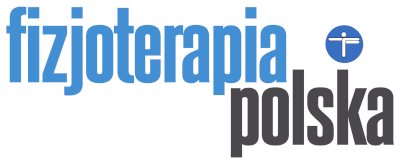Irmantara Subagio, Nengteng Manik, Rahmat Putra Perdana, Putra Sastaman B, Erna Yantiningsih, Raja Mohammed Firhad Raja Azidin, Slamet Raharjo
Irmantara Subagio, Nengteng Manik, Rahmat Putra Perdana, Putra Sastaman B, Erna Yantiningsih, Raja Mohammed Firhad Raja Azidin, Slamet Raharjo – Improved hand muscle ability after 6 weeks of squeezing a tennis ball exercise in children with spastic cerebral palsy – Fizjoterapia Polska 2024; 24(1); 73-77
DOI: https://doi.org/10.56984/8ZG2EF8753
Santrauka
Vaikai, sergantys cerebrine paralyže, paprastai yra mažiau fiziškai tinkami lyginant su tipiškai besivystančiais bendraamžiais. Tai daugiausia dėl to, kad vaikystėje trūksta fizinės veiklos ir mankštos. Jei paaugliai ir suaugusieji, sergantys cerebrine paralyže, negaus pakankamai mankštos, tai gali lemti sumažėjusią judrumą ir fizinę būklę. Labai svarbu pradėti gydymą nuo cerebrinės paralyžės, kai vaikas dar jaunas. Šio tyrimo tikslas buvo ištirti, kaip vaikai, sergantys spastine cerebrine paralyže, gali gauti naudos stiprindami savo rankų raumenų funkcijas spaudžiant kempinės teniso kamuoliuką atliekant rankų stiprinimo pratimus. Tyrimas įgyvendino tikrąjį eksperimentinį dizainą su prieš ir po testo kontrolinės grupės. Ši metodologija leido atlikti griežtą ir sistemingą tyrimą, užtikrinant patikimus ir validžius rezultatus. Tyrime dalyvavo dvylika 15 iki 17 metų amžiaus berniukų, kuriems visiems buvo diagnozuota spastinė cerebrinė paralyžė, dalyvavę kempinės teniso kamuoliuko gniaužymo pratimuose kaip intervencijos programos dalis. 30 minučių trukmės kempinės teniso kamuoliuko spaudimo pratimas apima 4-6 serijas po 15-20 kartų su 30 sekundžių pasyviomis pertraukėlėmis. Nustatyta programa reikalauja atlikti pratimą keturis kartus per savaitę šešias savaites. Prieš ir po intervencijos buvo naudojamas Rankų Spaudos Dinamometras, kad būtų įvertinta vaikų, sergančių spastine cerebrine paralyže, rankų raumenų jėga. Duomenų analizės technikos buvo taikytos naudojant nepriklausomų imčių t-testą su 5% reikšmingumo lygiu. Rezultatai parodė, kad po intervencijos dešinės rankos vidutinė raumenų jėga tarp kontrolinės ir eksperimentinės grupės (4,36 ± 1,35 kg prieš 34,16 ± 3,34 kg (p = 0,000)), kairės rankos vidutinė raumenų jėga po intervencijos tarp kontrolinės ir eksperimentinės grupės (2,31 ± 0,49 kg prieš 30,18 ± 2,08 kg (p = 0,000)). Tyrimo išvados rodo, kad dažnai atliekant teniso kamuoliuko gniaužymo pratimus, vykdomus keturis kartus per savaitę šešių savaičių laikotarpiu, gali būti pasiektas pastebimas pagerėjimas vaikų, diagnozuotų su spastine cerebrine paralyže, rankų raumenų funkcionalume. Tyrimo rezultatai rodo, kad įtraukiant šias veiklas į gydymo procedūras, gali būti teikiama reikšminga nauda asmenims, sergantiems šia konkrečia liga.
Raktažodžiai
cerebrinė paralyžė, vaikai, spastinis tipas, teniso kamuoliuko pratimai

